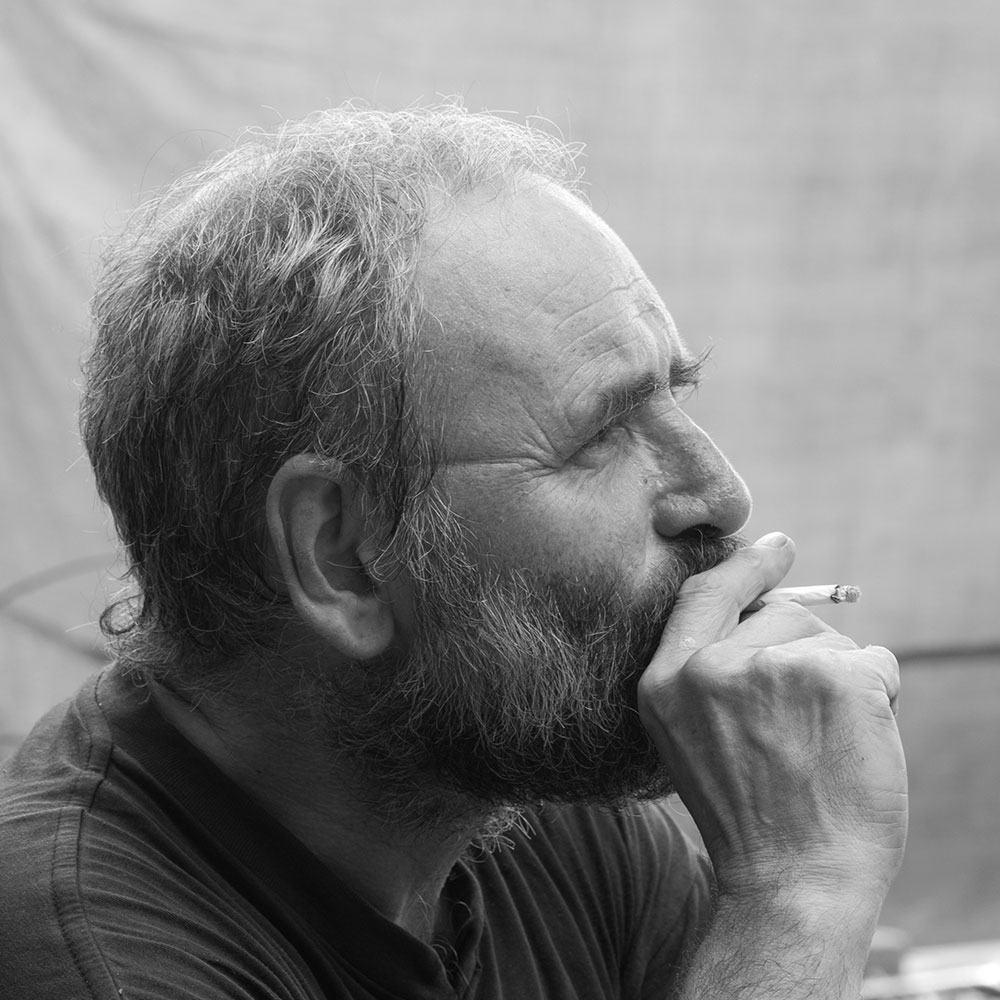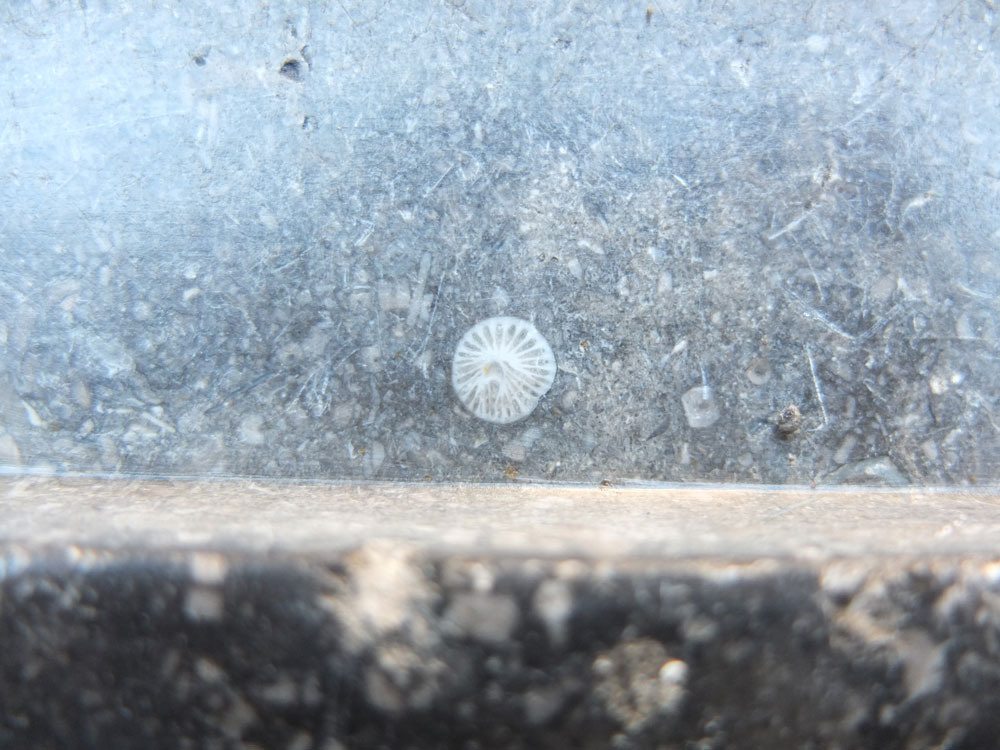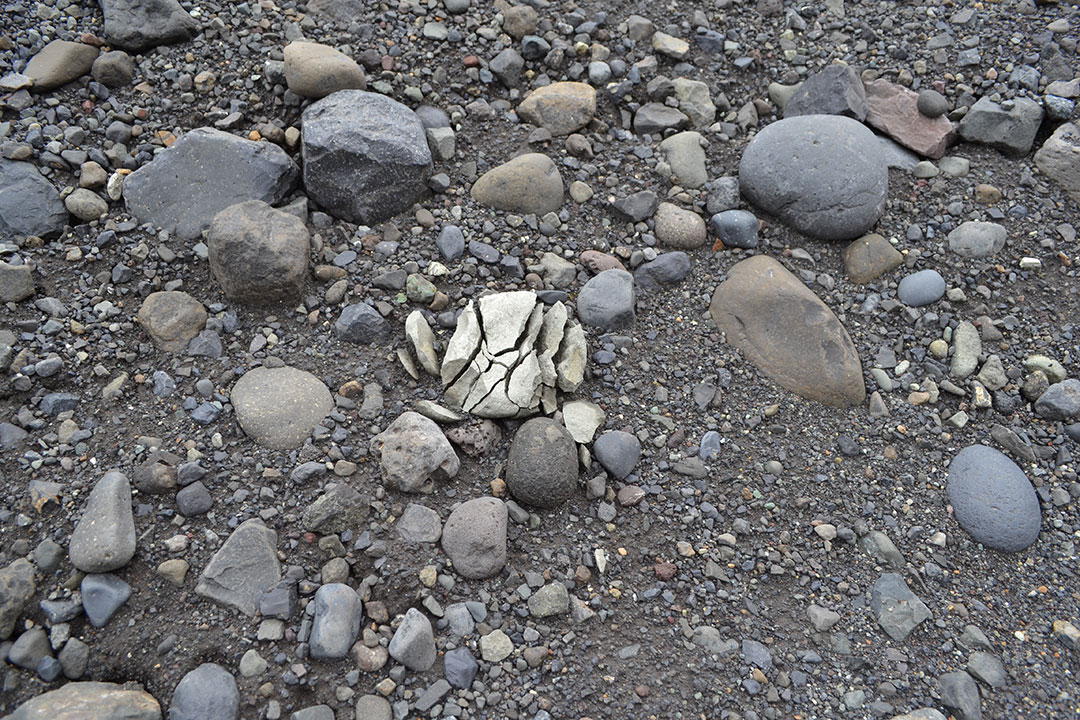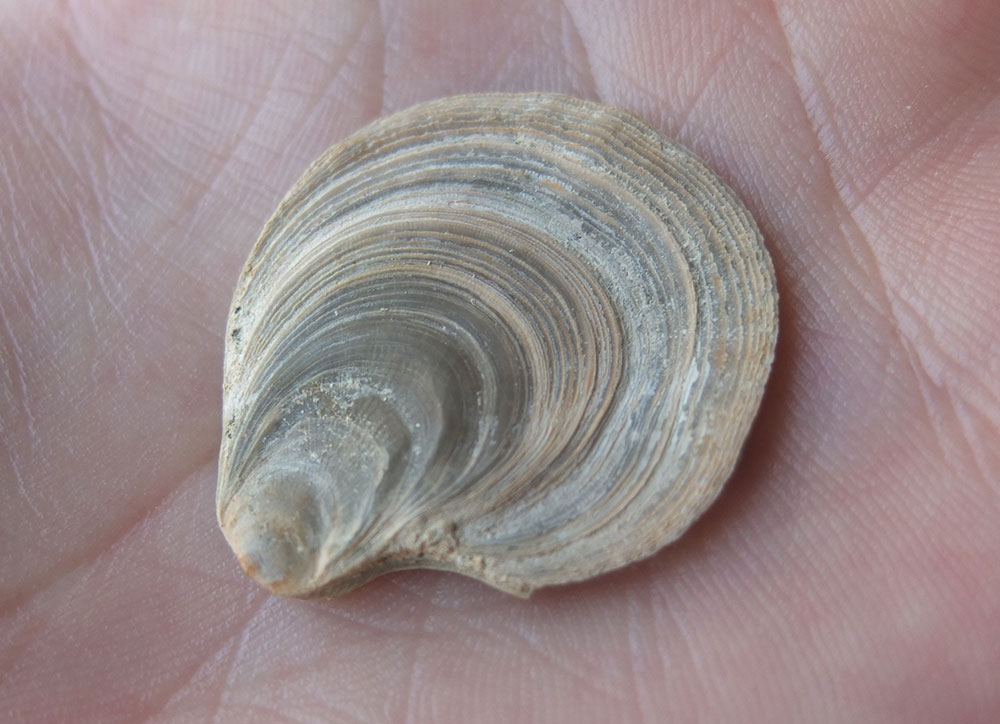* 1991, NL
Sanne Vaassen
The showdown between internal control and external forces is the starting point and central focus of Sanne Vaassen's work. She examines and attempts to capture the different shapes and properties that a movement can take. For Vaassen, a movement is a transition or transformation within a certain duration. She uses several movements, such as types of water current, a tree's transformation from summer to winter, or the change of the moles on her skin. The fusion of fact and fiction, formed by chance and the artist's control, is a reflexive pattern in her work. She plays with the reality in which we live, and the established symbols and traditions that we apply.
A fossil shell in a doorstep, on a stone window-ledge, becomes a miracle when you realize this was an animal that walked on the earth million years ago. How we experience the passage of time in and through our surroundings, and how we relate to that experience, is one of the points of departure for a new work by Sanne Vaassen.
For ‘TRANSITION ZONE’ Vaassen is collaborating with naturalist Nigel Harle, who has been working on old herbariums and historical archives at the Maastricht Natural History Museum for a number of years, which gives him a complete picture of the flora of Mount St. Pete before it was transformed by the ENCI’s industrial quarrying. After almost a century of excavation, the plant cover has changed dramatically; much has been lost, while new plant species have arisen. The plant collections and writings left by the botanists of yesteryear give us a window on the most salient features of a world that once was.
In the work in progress for Transition Zone, Sanne finds inspiration in the marks that time has inscribed in the fossils and limestone in the ENCI quarry as well as in the now vanished flora captured in museum archives. In reading these marks, though, there is no escaping our subjectivity.
For the first public moment at June 18th, Sanne Vaassen organised a city walk and invited Paleontologist John Jagt to give an insight about the structure and the geological period of the rocks that can be found in Maastricht. There are all kinds of natural stones, such as limestone, marble and flint stone. These have been used for facades of buildings and paving. In some rocks fossils, such as cross-sections of shells, and all types of corals can be found. It's a stunning fact that these animals lived millions of years back in time. How do we relate to this? How are these remains occurred and what do they tell about history?
For ‘TRANSITION ZONE’ Vaassen is collaborating with naturalist Nigel Harle, who has been working on old herbariums and historical archives at the Maastricht Natural History Museum for a number of years, which gives him a complete picture of the flora of Mount St. Pete before it was transformed by the ENCI’s industrial quarrying. After almost a century of excavation, the plant cover has changed dramatically; much has been lost, while new plant species have arisen. The plant collections and writings left by the botanists of yesteryear give us a window on the most salient features of a world that once was.
In the work in progress for Transition Zone, Sanne finds inspiration in the marks that time has inscribed in the fossils and limestone in the ENCI quarry as well as in the now vanished flora captured in museum archives. In reading these marks, though, there is no escaping our subjectivity.
For the first public moment at June 18th, Sanne Vaassen organised a city walk and invited Paleontologist John Jagt to give an insight about the structure and the geological period of the rocks that can be found in Maastricht. There are all kinds of natural stones, such as limestone, marble and flint stone. These have been used for facades of buildings and paving. In some rocks fossils, such as cross-sections of shells, and all types of corals can be found. It's a stunning fact that these animals lived millions of years back in time. How do we relate to this? How are these remains occurred and what do they tell about history?
Sanne Vaassen collaborates with Nigel Harle.
Nigel Harle (1952), born in England and living in Dutch South Limburg since 1972, is a keen amateur botanist and member of the Plantenstudiegroep of the Limburg Natural History Society and has published regularly in its journal Natuurhistorisch Maandblad. Since 2005 he has worked weekly as a volunteer at the Maastricht Natural History Museum, ordering and digitalizing the vast archives of the South-Limburg amateur botanist August de Wever (1874-1947) to make them accessible to researchers and conservationists. He also advises on management of the Museum wildflower garden and De Tuin van Sjef [‘Sjef’s Garden’], an ecological project in Velp, Gelderland. He is co-author of a book on the orchids of Mount St. Peter, which is to be published later in 2017, and co-editor of a quarterly local nature magazine ‘t Wiet Klieëf. He is also a nature photographer.
Last century, Nigel was active in the environmental, peace and other grassroots movements, often exploring the space between politics, theatre and imagination, for instance at the Beginning of the End of the Old World Festival held in 1993 on the precipice of a limestone quarry at ‘t Rooth. Partly thanks to the Shamanic Procession held at that event, the village was saved from destruction. Two years later this proven method was successfully applied a second time, helping to prevent the expansion of Maastricht-Aachen Airport. He was publishing in those days, too, mainly in obscure magazines. In recent years he has collaborated with writer Miek Zwamborn and artist Yeb Wiersma on exploratory walks in local woodland. He is now exchanging ideas with artist Sanne Vaassen.





